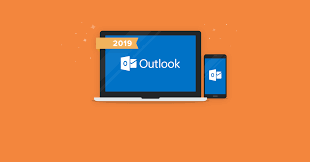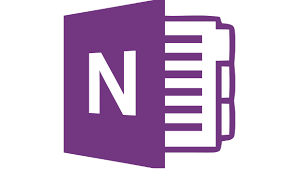| TITLE |
LENGTH |
DESCRIPTION |
| Email Etiquette: 01. The Basics of Email Communication |
05:22 |
In the modern world, clear, concise, and respectful emails are a must. In this course, you’ll learn how to choose the right communication method, craft well-structured messages, and maintain a professional tone so you can improve your efficiency, prevent misunderstandings, and build stronger professional relationships. Whether you’re responding to a customer concern or sending a status update to your supervisor, this course will help you communicate effectively and professionally. |
| Email Etiquette: 02. Crafting Your Email |
05:37 |
Great emails are clear, concise, and respectful. This course will help you structure your emails, choose the right tone, and avoid common pitfalls. By mastering these skills, you’ll improve your efficiency, prevent misunderstandings, and build better professional relationships. Whether you’re communicating with colleagues, clients, or superiors, this course will equip you with the tools to craft emails that make a positive impact. |
| Email Etiquette: 03. Sending Your Email |
05:04 |
Hitting “Send” isn’t the only thing you need to know about sending email: this course covers responding to emails, using reply all, Cc, and Bcc effectively, forwarding emails appropriately, and reviewing your email before it goes into the world. By following these best practices, you’ll ensure your emails are professional, clear, and respectful, enhancing your communication and relationships in the workplace. |
| Email Etiquette: 04. Scheduling Events and Calls Through Email |
04:06 |
This course aims to help you improve your time management and communication skills by covering best practices for coordinating meetings and calls, including how to craft clear and concise emails, use scheduling tools, and ensure everyone is on the same page. By mastering these techniques, you’ll enhance your efficiency and make scheduling convenient for your colleagues. |
| Email Etiquette: 05. Managing Emails |
04:46 |
More emails come in every day – how do we decide which to follow up on and how to manage them? That’s what this course hopes to answer. Learning best practices for organizing your inbox, archiving and deleting emails, and knowing what emails to keep will help you enhance your productivity, reduce clutter, and ensure you never miss an important message. |
| Ethics for Everyone |
06:24 |
A simple explanation of ethics is “having a set of moral principles that guide us in determining what is good or bad.” In business, this seems like it’s pretty much black and white. We simply follow our company’s code of conduct, and we’re in good shape. But if we’re not careful, ethical ambiguity can make its way into our actions and decision-making, leaving a trail of distrust and dissatisfaction. In this program, we’ll talk about seven ethical principles and their importance in how you conduct yourself on a daily basis. We’ll also discuss how to know whether you're acting ethically or not. |
| Failure: Accepting Failure |
05:51 |
Everyone experiences failure. Some of the most brilliant, innovative, successful people have failed at multiple things multiple times. And yet, they continue to brush themselves off and try again. How do you push past the devastation, embarrassment, self-doubt, and self-pity to move on from failure? It takes acceptance, ownership, and framing your failure as a chance to learn and grow. So in this course, we’ll go over how to accept your failures and come out stronger as a result. We’ll talk about redirecting your focus and staying positive. Lastly, we’ll discuss how to address failure with your supervisor or team. |
| Failure: Moving Forward and Learning from Failure |
05:37 |
Henry Ford said, “Failure is simply opportunity to begin again, this time more intelligently.” In the moment, certain failures can seem catastrophic, earth-shattering, and devastating, but it’s important to maintain a healthy perspective and positive mindset. As Nelson Mandela once said, “Do not judge me by my successes, judge me by how many times I fell down and got back up again.” This takes endurance, grit, and determination; these are the qualities we want defining our lives. In this course, we’ll talk about what it takes to move forward from a mistake and how to learn from past failures to ultimately find success. |
| Focus: Focusing in a Noisy Workplace |
05:03 |
Your colleagues are having a conversation about the woes of potty training. Sally is listening to thrash metal and filing her nails. Rick is doing a sales call on speakerphone. All in the same room. Meanwhile, you’re trying to write a proposal and absolutely cannot concentrate. How do you focus in a noisy work environment? If you’re working in cubicles or an open office plan, this can be a real struggle. So in this program, we’ll take a look at some tactics to try to help you focus in a loud workplace. We’ll go over setting expectations, using headphones, finding a quiet space, working remotely, and more. |
| Focus: Focusing in Times of Hardship |
05:04 |
There’s been a death in the family. Your marriage is falling apart. Your mother has been diagnosed with cancer. Personal hardships can hit us at any time, and yet, we must carry on and fulfill our work obligations. But how? How do you set aside your personal conflicts and emotions and focus on your job? That’s what this program is designed to help you with. We’ll talk about dealing with emotions, talking with colleagues and superiors, leaning on your support system, and understanding the benefits that your workplace may provide. We’ll also take a look at the importance of planning your work days and using work as an outlet during difficult times. |
| Generation Z: 01. Who Are They? |
02:18 |
It’s the most diverse and inclusive generation yet. At around 23 million-strong, they currently constitute 25% of the population. And within the next five years, they will be the fastest-growing group in both workplace and marketplace. To remain competitive on both fronts, we should know about these Zers and what makes them tick. Enter this series. |
| Generation Z: 02. Generation Z vs. Millennials |
03:49 |
We’re still learning about who millennials are in the workplace. And now, look out! Here comes Generation Z! Now you need to be knowledgeable about both. This course will go through the differences between the Yers and Zers so you know how to adjust your business, marketing, and leadership accordingly. |
| Generation Z: 03. Selling to Generation Z |
03:34 |
By 2020, 40% of all consumers will be Generation Z. In order to sell to this generation, we need to be “speaking their language.” This course will look at easy ways to do just that. |
| Givers, Takers, and Matchers |
04:46 |
You’re probably familiar with the idea of givers, takers, and matchers in your social life, but it also applies to your coworkers and the way you interact with them. This is especially true in a competitive work environment, where people often take more than they give. So, is it better to be a giver, a taker, or a matcher, and which one are you? That’s what we’ll cover in this course. |
| How to Finish What You Start |
06:54 |
Are you the person who starts a text message but forgets to send it? Do you have a half-finished DIY project waiting for you at home? Do you have a to-do list with many things left unchecked? Yes, some of us may lack the time, focus, desire, or motivation to finish what we’ve started. But who can blame us when studies show that we get interrupted nearly every three minutes? Whatever your reason for being a non-finisher, this course is designed to help you push through and complete your unfinished tasks. We’ll go over procrastination, common fears, and why we tend to start and stop. We’ll also touch on perfectionism and making a plan. |
| How to Leave Voicemails That Get Returned |
08:28 |
Leaving a bad voicemail for someone is the worst. Maybe you were unprepared or caught off guard. Maybe you stumbled or forgot to leave your name. Whatever the case, it’s embarrassing and unprofessional. Given the high use of email and text messaging, leaving a voicemail message is becoming a rare business practice. But it’s still important, particularly if you work in sales or customer service. In this program, we’ll go over six steps to leaving an effective voicemail. We’ll include how to properly identify yourself, knowing what information to leave, and the proper length of a voicemail message. We’ll also give you some tips on what NOT to do to help you maximize the chance of getting your phone calls returned. |
| How to Receive Feedback |
07:23 |
Supervisors and peers give feedback so you know what you're doing well and where you need to improve. It's an opportunity to help you develop and become more successful. That feedback can either be positive or negative. Whether it's positive or negative, some of us need help accepting feedback. |
| Is it Better to Be Agreeable or Disagreeable? |
05:46 |
Imagine your coworker is running way behind on their project, again, and they ask you to stay late and help. Assuming you don’t have any other obligations, would you just say yes and help them out, or would you say no? In this scenario, the degree to which you’re agreeable or disagreeable will influence your response. People who are highly agreeable would probably accept the project, just because their coworker asked them to, or because they know the project is important to the company’s success. And somebody who is disagreeable might say, “That’s something you should’ve done sooner” or, “I already helped you last week, ask somebody else.” So, what are the differences between agreeable and disagreeable, and which one’s better? That’s what we’ll discuss here. |
| It's Okay Not to Know |
05:32 |
It doesn't matter what industry you work in, or how long you've been there, there will be times when someone asks you a question that you don't know the answer to. This is completely okay. It doesn't make you stupid, inadequate, or even a disappointment to the person you're speaking with. It makes you human! So, in this course, we'll discuss what to do or say when you don't know the answer. We'll go over getting clarification, knowing when and how to say, "I don't know," doing your research, and following through on following up. |
| Keep Your Cool: Changing Perspective |
06:16 |
Keeping your cool is a decision. Like we mentioned earlier in this series, you CAN control your anger. Are you tired of being angry? Being mad all the time is exhausting. So, if you want things to change, you need to commit to it – and the first step in that process is changing your perspective. In this course, we’ll go over various tips to help you with this, including increasing your self-awareness, identifying problems as they happen, and examining your circle of concern. |
| Keep Your Cool: Controlling Anger |
05:43 |
By this point in our series on keeping your cool, you should have a much greater understanding of your anger and your emotions, in general. But this is difficult. Sometimes you’re going to lose perspective, and sometimes you’ll fail to prevent your anger. That’s okay, but there’s still more we can do. In this last program, we’ll talk about controlling your anger in the heat of the moment. We’ll go over the steps you can take to slow the physical process that happens as anger flares up. We’ll also discuss some mental and emotional exercises that can help keep your anger from erupting. |
| Keep Your Cool: Preventing Anger |
04:50 |
Wouldn’t it be nice if you were able to just not get angry? That’s kind of ridiculous, right? Well, that’s actually what we’re going to talk about in this course. It’s normal to feel angry, and it’s healthy for you to express your emotions. Preventing your anger IS possible – and it has a lot to do with knowing how to respond in those tense situations. In this program, we’ll talk about the importance of using assertive communication, rather than being passive or aggressive, in how you address conflict with others. |
| Keep Your Cool: Types of Anger |
05:38 |
Do you think anger is a bad thing or a good thing? Well, most people say that anger is always bad, but it is both good and bad. Anger can be a tool that makes us determined, or strong, or inspired. On the other hand, it can also make us disruptive, toxic, and even violent. So, how you handle your anger is what matters – and the more you understand it, the more you can recognize it, and deal with it. In the previous program, we talked about the nature of anger and how nuanced it can be. Because there are multiple ways to experience anger, we need to talk about the different types of anger. That’s what we’ll cover here. |
| Keep Your Cool: Warning Signs |
04:57 |
We all get angry. It’s a natural human response. But some of us tend to get angrier than others and later regret our reactions. If you fall into this category, then this course is for you. Here, we’ll discuss the warning signs to watch for when we feel anger coming on, including the physical symptoms we experience. We’ll also talk about internal and external agitators to be aware of, which include things that you can and cannot control. Then we’ll go over how to navigate these situations to avoid an eruption of anger. Lastly, we’ll do an exercise to help you determine your own agitators. |
| Keep Your Cool: What is Anger? |
04:34 |
Do you have a hard time keeping your cool when something upsets you? When your emotions bubble to the surface, do you tend to explode, and then regret your reaction later? This can leave a wake of consequences, including damage to relationships and problems at work. In this program, we’ll talk about the nature of anger, how to change your perspective, and several ways you can cool down before erupting. |
| Latest App Trends |
02:41 |
What's up for apps in the coming year? This course gets you "up to speed" on the latest trends, keeping you at your connected and productive best. |
| Liars: How to Deal with Liars |
05:21 |
Do you know someone who can't seem to tell the truth? Or someone who seems nice, but who’s told some terrible lies? Some people lie to get what they want, some lie because they believe what they're saying, and others may just lie out of habit. Whatever the case, there are many ways you can deal with liars. That’s what we’ll cover in this program. We’ll discuss ways to get to the truth, go over how to manage chronic liars, and talk about how to confront someone who’s being dishonest. |
| Liars: How to Spot Liars |
06:55 |
Have you ever been lied to? Did you know it in the moment? Or did you discover later that the person lied? Either way, it’s a terrible feeling and whether we know it or not, the impacts of a lie can ripple beyond just one incident. It betrays your trust. It makes you feel foolish. It leaves you feeling distrustful of others. The good thing is, there are ways to spot when someone is being dishonest. That’s what we’ll cover here. We’ll discuss physical reactions, specific behaviors, and verbal responses to be aware of so you can spot if someone is lying. |

.jpg)
.jpg)
.jpg)
.jpg)


.png)






